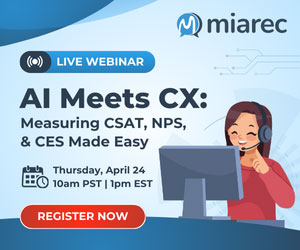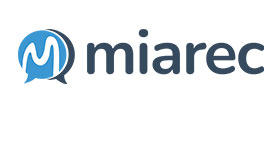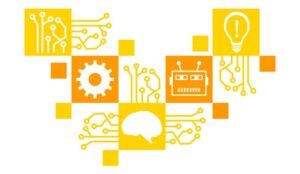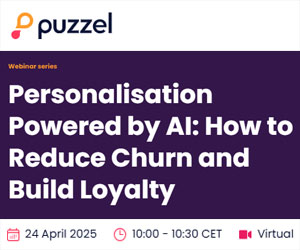John Ortiz at MiaRec compares the four main approaches to Topical Analysis: rule or keyword-based, NLP-based, ML-based, and Generative AI-powered.
Do you wish you had more insight into why your customers call your contact centre? Or do you already have a Topical Analysis tool in place and wonder if upgrading to the new Generative AI-based tools is worth it?
We have helped hundreds of contact centres better understand the Voice of their Customers by offering Topical Analytics and other Voice Analytics solutions for years. We recently released our new Generative AI-based Topical Analysis, and we know our customers and potential buyers have lots of questions.
The 4 Main Approaches to Topical Analysis in Contact Centres
In a contact centre context, Topical Analysis refers to the automated process of identifying and categorizing the main subjects or themes discussed during customer interactions, typically in phone calls, chats, or emails.
This analysis helps contact centres understand why customers are calling, identify common issues, and gain insights into customer needs and concerns.
There are several approaches to Topical Analysis, including:
- Rule-based / Keyword-based: This is the simplest and earliest form of Topical Analysis.
- NLP-based (Natural Language Processing): This approach uses more advanced linguistic techniques to understand and categorize topics.
- Machine Learning-based: This method uses statistical models trained on large datasets to identify topics.
- Generative AI-Powered: This is the most recent approach, utilizing LLMs (Large Language Models) to understand conversation context and nuance.
When you are evaluating or purchasing a Topical Analysis solution, it is imperative to know what technology that solution is based on because there are key differences in accuracy, flexibility, scalability, ease of setup and maintenance, and the depth of insights you can expect.
- Accuracy: More advanced technologies can better understand context and nuance, leading to more accurate topic identification.
- Flexibility: Some approaches are more adaptable to different industries or types of conversations.
- Scalability: Certain technologies can handle larger volumes of data more efficiently.
- Setup and maintenance: Different approaches require varying levels of initial configuration and ongoing adjustments.
- Depth of insights: More sophisticated technologies can provide richer, more nuanced insights into customer conversations.
Each approach has strengths and drawbacks. Understanding these different approaches and their underlying technologies will help you not only choose the most appropriate solution for your specific needs, but also interpret the results effectively.
Let’s analyze the key differences, strengths, and limitations of each approach to Topical Analysis in contact centres:
Rule-Based
Pros
- Simple to understand
- Predictable results
- Low computational requirements
Cons
- Looks for exact matches without considering context
- Requires manual creation and maintenance of keyword lists
- Rigid; only recognizes exact matches (cannot handle ambiguous terms well)
- Will miss topics if exact keywords aren’t used
- Prone to false positives
NLP-Based
Pros
- Better understanding of language structure and context
- Can handle variations in phrasing
- More accurate than simple keyword matching
Cons
- Still relies on predefined rules and models
- May struggle with highly domain-specific language
- Requires linguistic expertise to set up and maintain
- Setup is difficult and requires technical understanding (using expression syntax)
ML-Based
Pros
- Can identify patterns and topics without explicit programming
- Improves over time with more data
- Can handle large volumes of data efficiently
Cons
- Requires large amounts of training data
- May produce unexpected or inconsistent results
- Can be a “black box,” making it difficult to understand why certain topics were identified
Gen AI-Based
Pros
- High level of language understanding, including context and nuance
- Can adapt to new topics without retraining
- Able to understand and generate human-like text
- Can provide more detailed and insightful analysis
Cons
- Computationally intensive, potentially leading to higher costs
- May require fine-tuning for specific domains
- Potential for hallucinations or generating plausible but incorrect information
- Privacy concerns due to the need for external API calls in some implementations
Rule-based Approach to Topical Analysis
The rule-based approach to Topical Analysis was the earliest form of automated Topical Analysis in contact centres. It was widely used in the early days of call centre analytics and is still used in some simpler applications today.
It relies on predefined lists of words or phrases (“cancel booking,” “cancel reservation”) associated with specific topics (topic: room cancellation).
The system scans transcripts or text to find exact matches to these keywords. When a match is found, the corresponding topic is assigned to that part of the conversation.
NLP-Based Approach to Topical Analysis
Natural Language Processing or NLP-based systems use linguistic rules and algorithms to understand and process human language.
This often involves techniques like tokenization, part-of-speech tagging, syntactic parsing, and semantic analysis, and often requires lexicons, grammars, and ontologies.
Basic NLP techniques were applied to contact centre analytics in the late 1990s to the early 2000s. From the mid-2000s to the 2010s, more advanced NLP techniques became common, including sentiment analysis and more nuanced topic extraction.
One of the most common use cases for NLP in the context of contact centres is sentiment analysis. Since many Conversation Intelligence platforms offer both Topical and Sentiment Analysis, their Topical Analysis features are almost always based on the same technology (NLP).
While NLP systems were a leap in development from much simpler rule-based systems, they remained relatively rigid, required a lot of setup and maintenance, and had a relatively large error rate. Also, for Topical Analysis, NLP is much more effective when used with machine learning.
ML-Based Approach to Topical Analysis
In contrast to NLP-based systems that aim to understand texts and/or languages the same way humans do, Machine Learning or ML-based systems use statistical models trained on large datasets to identify patterns and make predictions.
The most common techniques include classification, clustering, and topic modeling algorithms, making it a good fit for Topical Analysis.
Machine Learning-based systems learn patterns from data rather than relying on pre-programmed rules. Their knowledge is represented as model parameters.
With the appropriate training, they can adapt to new domains or language variations. However, they are often less transparent, resulting in a “black box” feeling. In other words, it might be harder to understand why certain topics were identified.
Again, it’s worth noting that modern approaches often combine elements of both NLP and ML, creating hybrid systems that leverage the strengths of both. These hybrid approaches can offer more robust and flexible solutions for Topical Analysis in contact centres.
Generative AI-Powered Approach to Topical Analysis
The Generative AI-based approach to Topical Analysis is very new. In fact, as of August 2024, many Conversation Intelligence and Speech Analytics vendors do not yet offer Topical Analytics based on Generative AI, but rather on ML and/or NLP.
Generative AI is the subset of Machine Learning that, according to Gartner, “enables machines to learn from a representation of artifacts from data and models, and use it to generate brand-new, completely original artifacts that preserve a likeness to original data or models.”
In other words, Generative AI uses Machine Learning, Large Language Models (LLMs), NLP, and other AI capabilities to create new and original text, images, video, audio, and structures.
Because it can understand not only the context of the entire conversation but also nuances on a very high level, it is the ideal technology for Topical Analysis.
One of the key benefits is that it is super easy to set up and maintain. You do not need a technical administrator because you can use natural language to describe what you want the system to do.
Which Approach Is Best for Your Organization?
As you can see above, the approaches have some major differences.
First and foremost, there’s a clear progression from simple keyword matching to advanced language understanding as we move from rule-based to Generative AI approaches.
Generative AI and Machine Learning approaches are generally more flexible and adaptable to different contexts than rule-based and traditional NLP approaches.
Furthermore, rule-based systems require more upfront work in creating rules, while ML-based and NLP-based systems need significant training data but can adapt more easily.
On the other side, rule-based and traditional NLP approaches are more transparent in how they work, while ML and AI approaches can be more opaque.
Finally, more advanced approaches typically require more computational resources. They might, therefore, be more expensive, but they can also provide much more accurate and nuanced Topical Analysis, especially Generative AI-based approaches.
This blog post has been re-published by kind permission of MiaRec – View the Original Article
For more information about MiaRec - visit the MiaRec Website
Call Centre Helper is not responsible for the content of these guest blog posts. The opinions expressed in this article are those of the author, and do not necessarily reflect those of Call Centre Helper.
Author: MiaRec
Published On: 30th Aug 2024 - Last modified: 22nd Oct 2024
Read more about - Guest Blogs, MiaRec






 MiaRec is a global provider of Conversation Intelligence and Auto QA solutions, helping contact centers save time and cost through AI-based automation and customer-driven business intelligence.
MiaRec is a global provider of Conversation Intelligence and Auto QA solutions, helping contact centers save time and cost through AI-based automation and customer-driven business intelligence. 




























